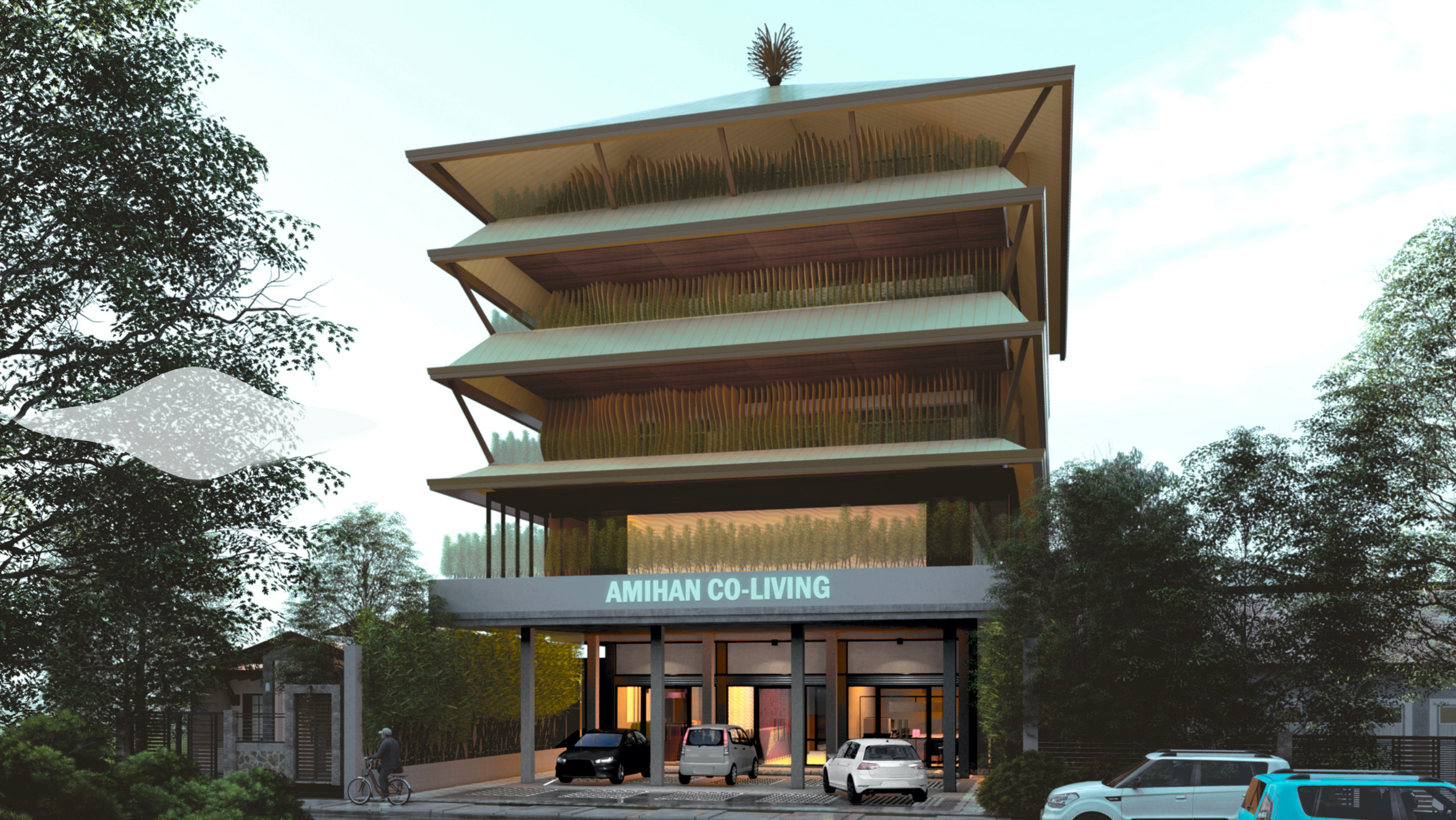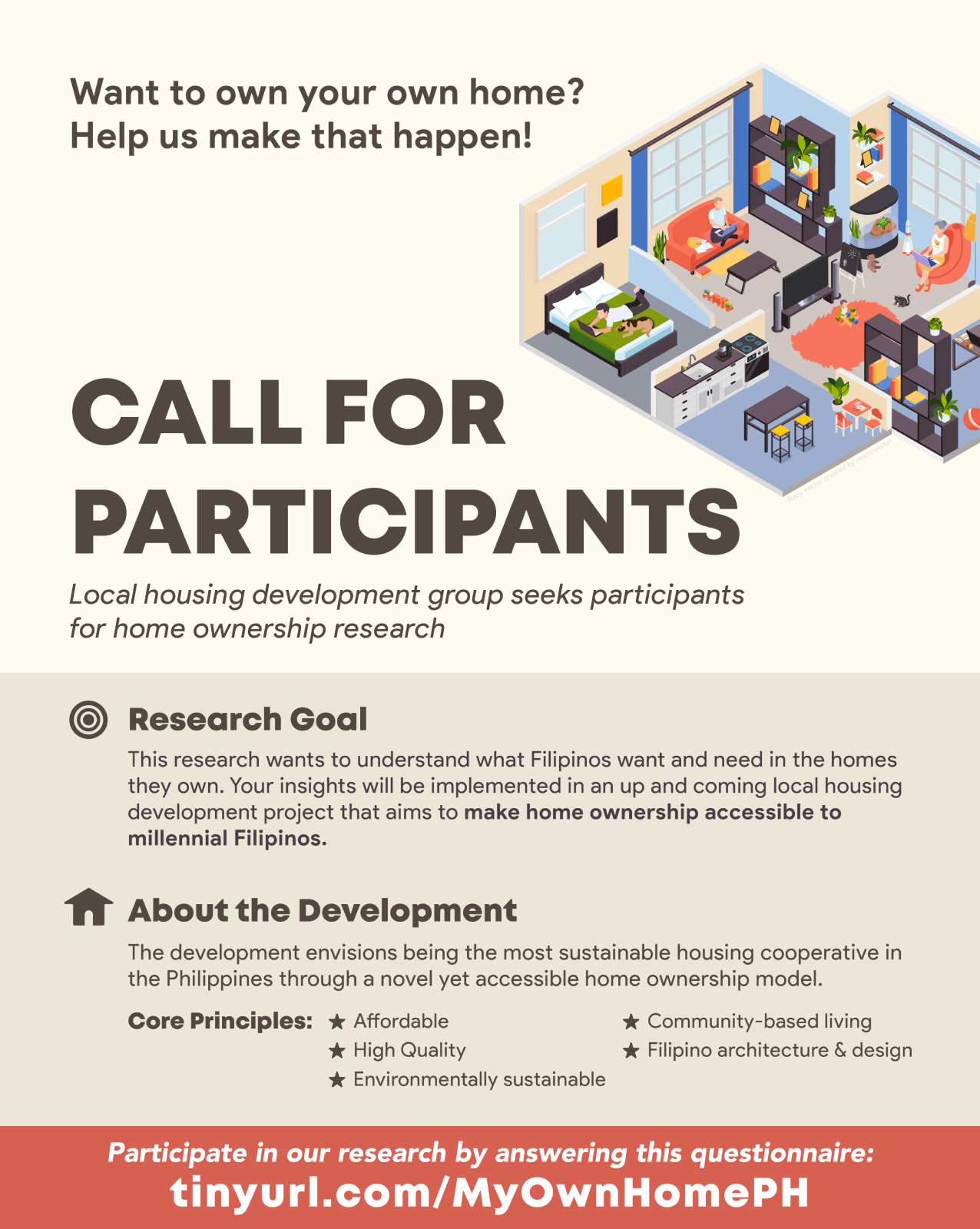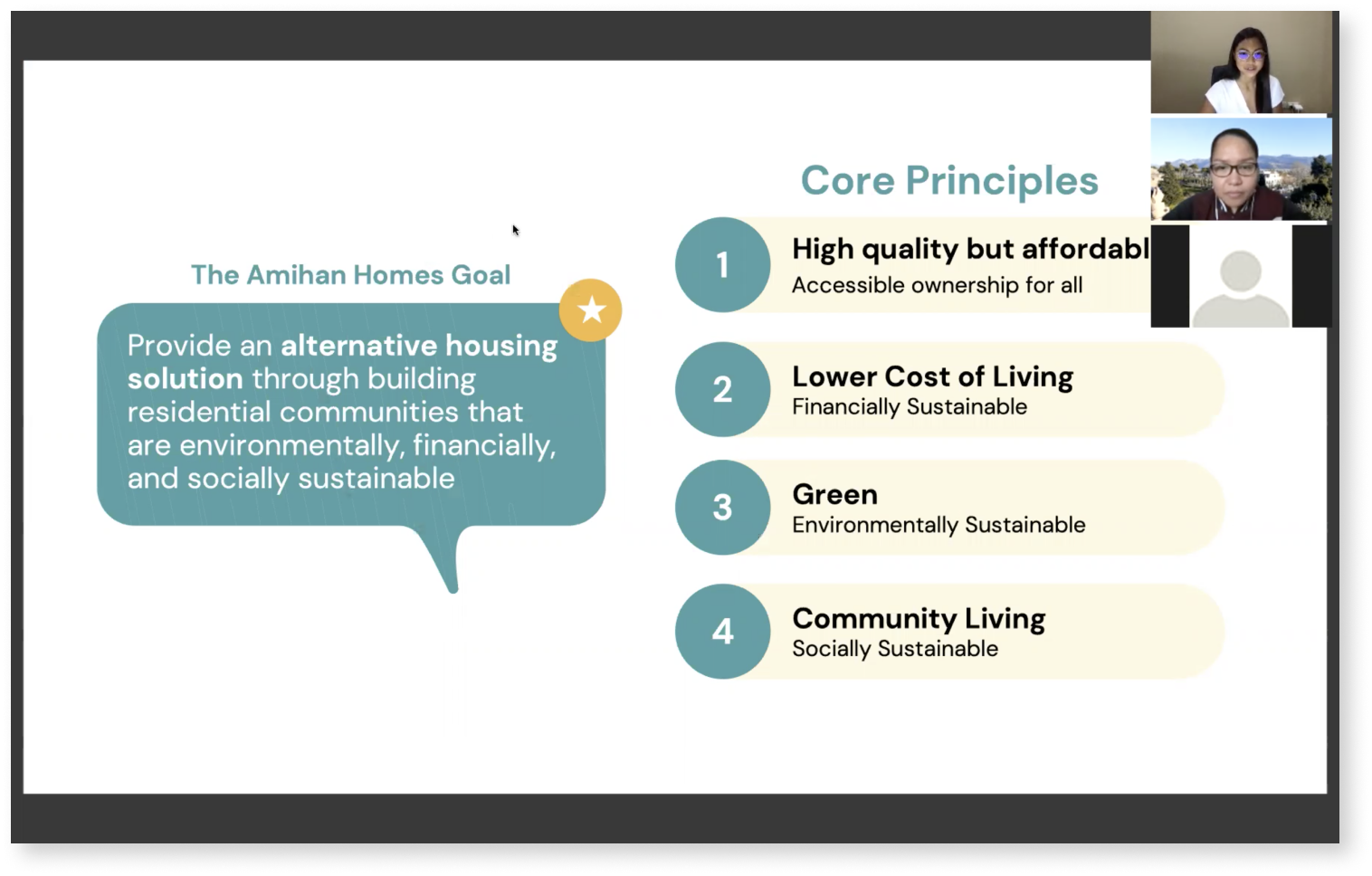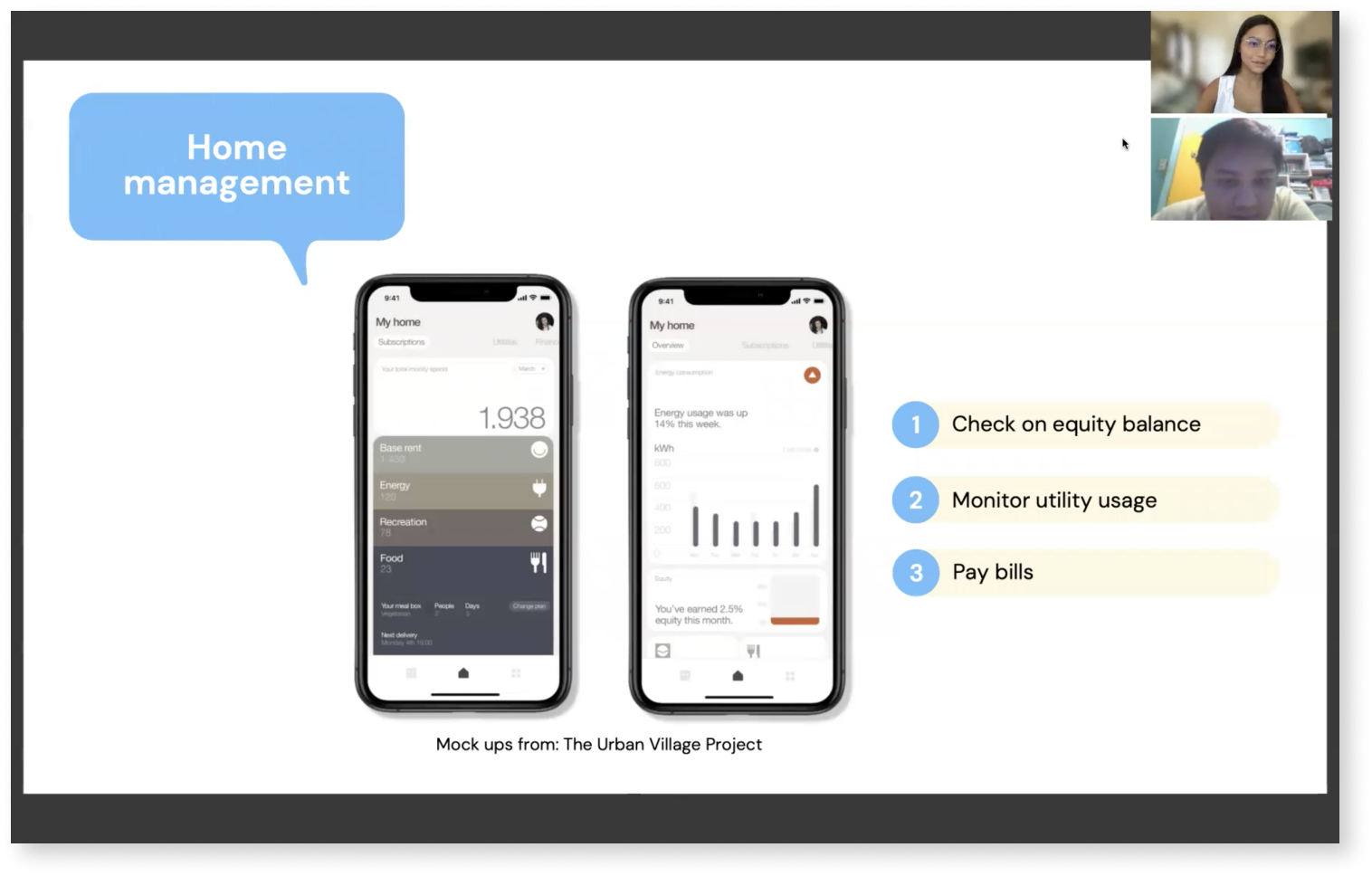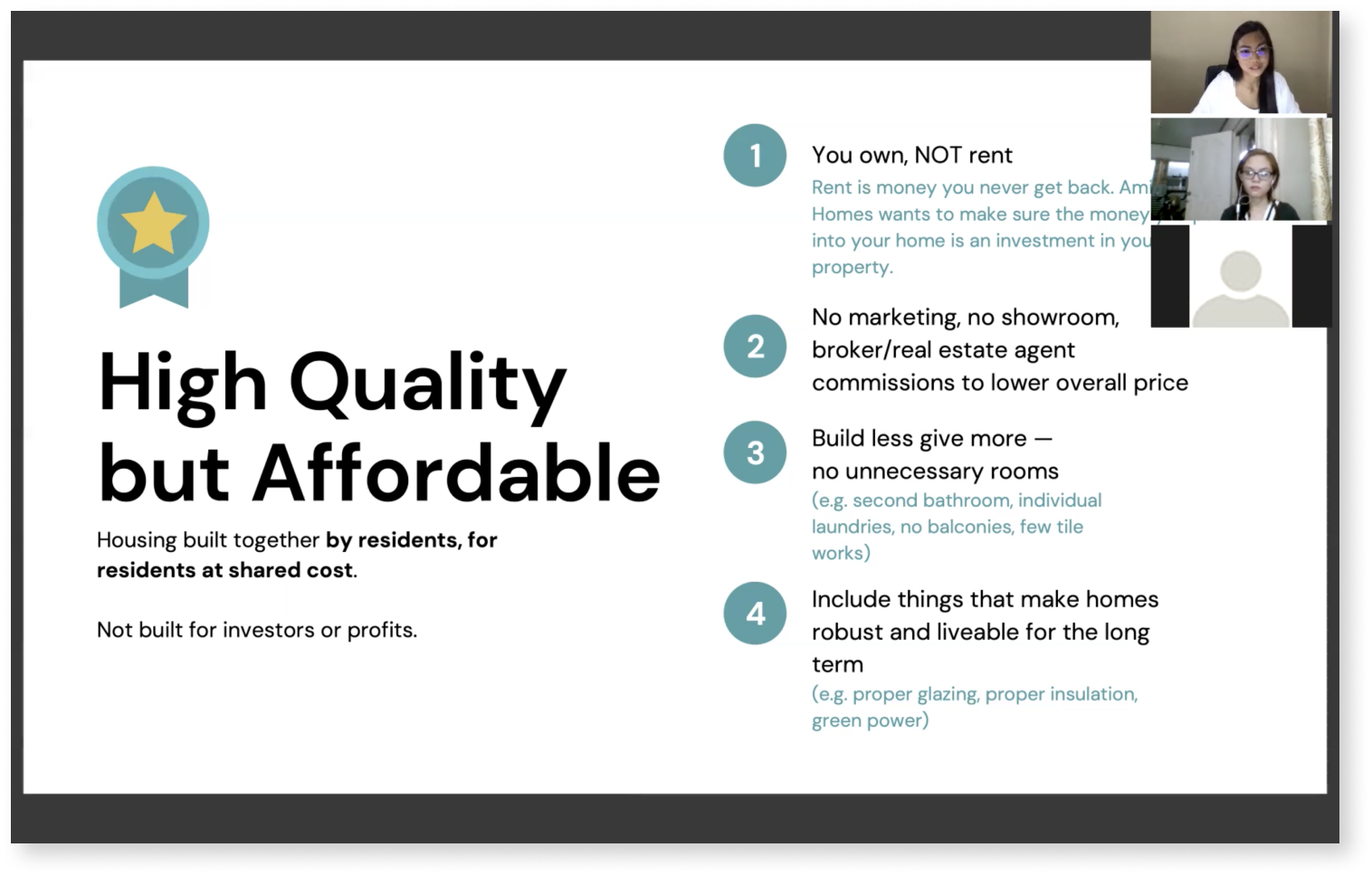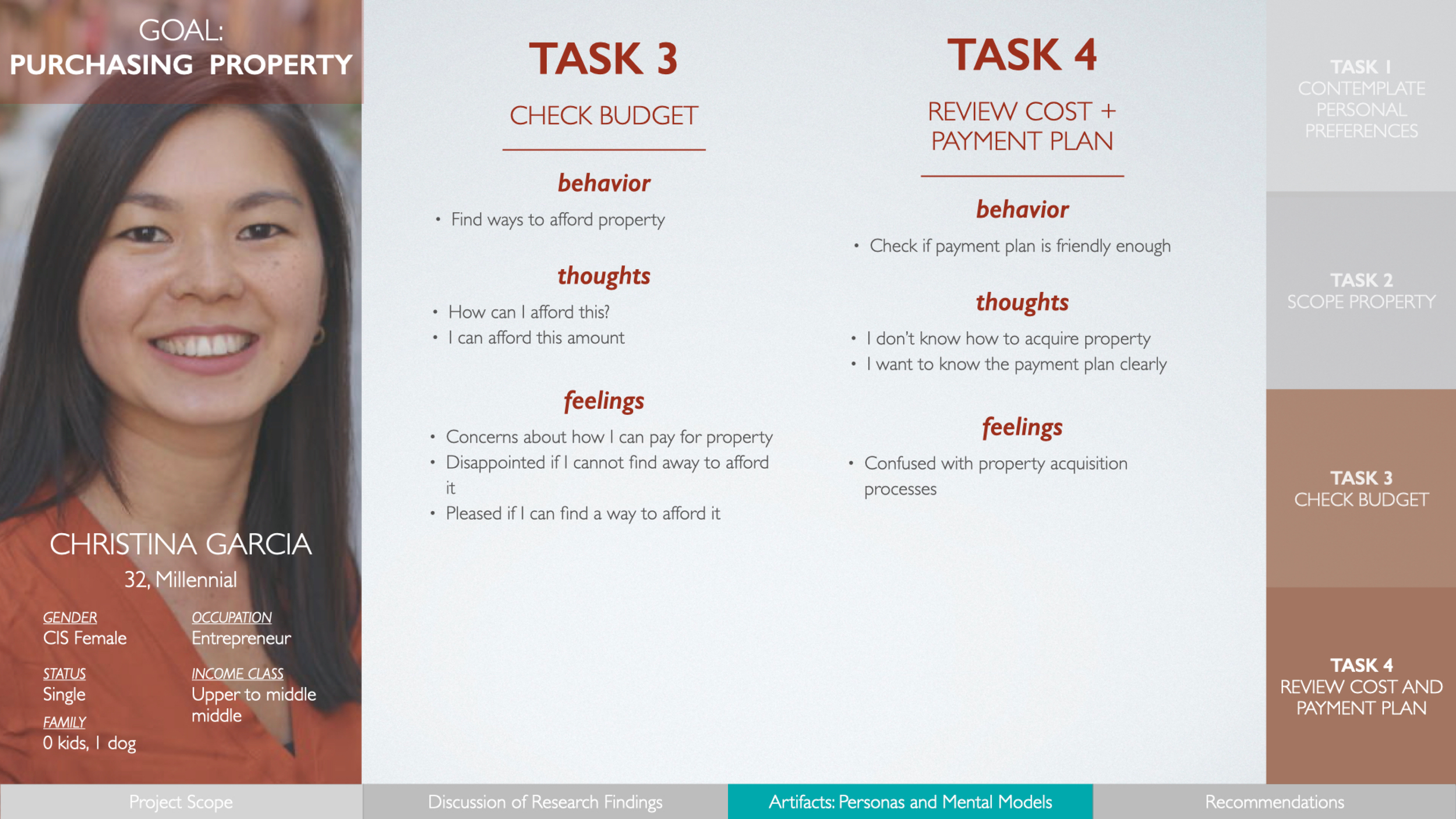Real Estate • Non-digital product • User research
evaluating a new model of home-ownership
The proponents of this housing development brought forward a problem: young adults today cannot afford their own homes.
It has become extremely expensive to buy a home, be it a house or a unit. Due to this, most young adults must set aside a significant portion of their salaries to rent homes, as opposed to personal investments.
The client aims to provide a way for young adults to invest in and own their own homes at an affordable arrangement. They aimed to do this through building a new housing development that adopted a novel form of homeownership, uncommon in their base country.
Quick context
User researcher
My role
User research team
Client
teams involved
The challenge
evaluate this new model of home ownership with the target market + gather feedback that the clients could incorporate.
pre-research research
I couldn’t perform user research on a product that I didn’t myself understand.
So, I held a stakeholder interview with the project proponent to fully grasp this novel homeownership model, how it worked, and what it entailed.
After this, I crafted a discussion guide for the user interviews and sent it to the project proponent for approval, to ensure that I was asking the participants questions he wanted answers to.
Participant
recruitment
I was also tasked to recruit 10 participants from all over the country for the user interviews.
I had 1 week to accomplish this.
The qualifications for the participants recruited were based primarily on income, age, location, and current living arrangements.
I first sent out a screener then selected participants based on who best fit the necessary qualifications.
user interviews
I conducted 10 user interviews. For each, I had to allot 1 hour and 30 minutes of time. This was due to the novel and unique nature of the development’s homeownership model.
Throughout the user interviews, I presented a few mini-decks that explained what the development was and how its homeownership model worked.
It was only after I presented these decks that I was able to properly extract value-adding feedback, questions, and suggestions about the development.
data analysis
Recordings were made and notes were taken for all interviews. All notes were subsequently organized into affinity diagrams via Miro.
This is a bird’s eye view of the note taking, affinity boards, and artifact boards used throughout the research.
Research artifacts: Personas and Mental Models
Together with my research advisor, we decided that personas and mental models were the appropriate artifacts to craft as they would help the project proponent better tailor the development to the target audience.
Feel free to look through the personas and corresponding mental models crafted by clicking through the arrow buttons.
What did i find out?
There were many concerns about the learning curve in Philippine real estate, particularly searching, learning, understanding, and purchasing property in the Philippines.
With a relatively unfamiliar concept being brought to the market, the development should not exacerbate the learning curve, but instead, ease it.
Users liked it!
Users gave a generally positive reception to the development and its homeownership model.
but…
However, due to the novelty of this concept, several users expressed that they would want to completely understand the model and all the details that come with it before they could make a firm decision of availing of the development.
…They want more info
Users stated that they would want the following information before making a purchasing decision:
1. Property costs
2. Payment processes and terms
3. Property acquisition processes
4. Site locations
Participants were also particularly reiterative of how the development would screen potential new residents, given its community-based living feature.
What we recommended:
a web or app based information hub
The development could have a comprehensive website and/or app that would thoroughly explain and provide the ff info:
Concept of co-op housing and its implications
The development’s homeownership model and purchasing process
Visual collaterals
Site locations
Unit costs, monthly dues, payment plans
List of amenities available
Community-based living concept explanation and implications
Rules and regulations of the development
With this, they would be able to ease the learning curve in purchasing property while educating their target market about their unique homeownership model.
potential selection criteria for residents
There was a repeated concern that residents should be well-screened especially in a community-based living set up.
Based on user interviews, potential resident selection criteria could be based on applicants’ understanding, views on, as well as amenability to the following:
The type of housing co-operative the development is establishing
Rules and regulations that govern the co-operative
The development’s homeownership model
Co-housing in a diverse community
Contributing and upholding a safe, secure, and non-discriminatory community
Incorporating sustainable energy and living out an eco-friendly lifestyle
Taking good care of the physical development
Privacy and boundaries
Extent of participation in community activities
research findings are a product in themselves
A short reflection on what I learned from working on this project:
User experience must not be integrated merely in the end product or service itself. User experience, first and foremost, must translate into the research and its presentation.
With over 15 hours worth of data from user interviews, it would be an understatement to say the research was very data-rich both in terms of quality and quantity. I found myself asking: how might I present all this data in the most succinct way possible?
Congesting over 15 hours of data into a mere 60 slides presented in an hour was difficult. But seeing the client’s interest and ease in absorbing the summarized findings made it pretty worth it.
From this, I learned that any research done in UX is initially felt not by the users yet but by the client contracting the research. For this reason, all output, no matter how expansive or rich the data may be, should be as digestible as possible by any and all person who may need to use the findings.
